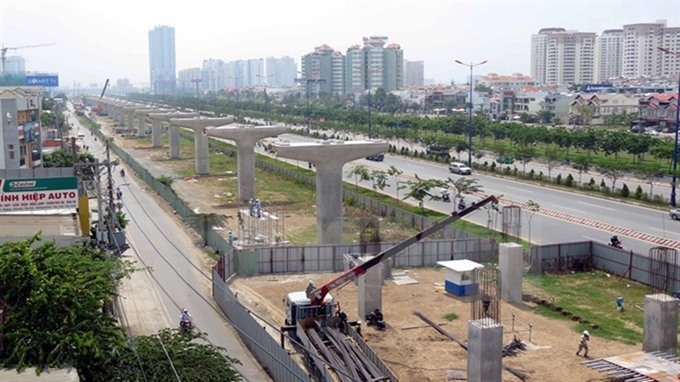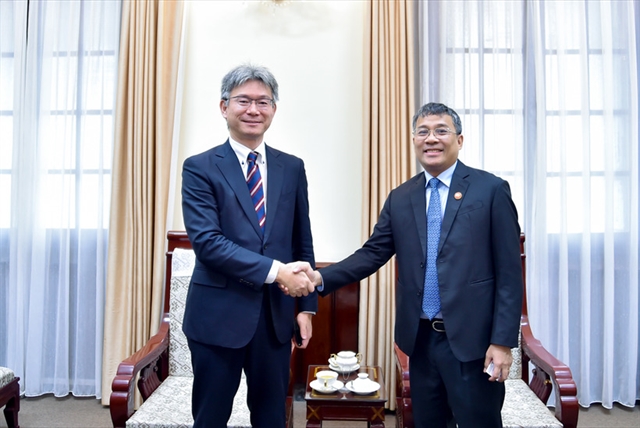 Economy
Economy

Việt Nam led the South East Asian countries in infrastructure spending, which was 5.7 per cent of the country’s gross domestic product (GDP), a recent report by property services firm CBRE revealed.
 |
| A metro project in HCM City. Việt Nam leads the South East Asian countries in infrastructure spending. — Photo tindiaoc.vn |
HÀ NỘI – Việt Nam led the South East Asian countries in infrastructure spending, which was 5.7 per cent of the country’s gross domestic product (GDP), a recent report by property services firm CBRE revealed.
The report titled ’Connecting Asean: Infrastructure, Integration and Real Estate Growth’ noted that the demand for infrastructure in Việt Nam was intensified, given the large-scale urbanisation and the positive economic outlook.
Citing statistics, the report stated that the urban growth in Việt Nam increased from 27 per cent in 2005 to 34 per cent in 2015.
Vast investments in infrastructure developments were bolstering the property market, according to CBRE.
In major cities such as HCM City and Hà Nội, planned metro lines had been set up to foster the development of satellite economic areas.
CBRE said that the planned six-line metro system in the southern city would connect to satellite cities in provinces, including Long An, Bình Dương and Đồng Nai, and residential areas along the metro stations were expected to see a rise in selling prices and rental growth.
In Hà Nội, where eight metro lines have been planned, office clusters could be created within 1km from the metro stations, CBRE said.
Apart from these, there are other significant ongoing projects such as the Hà Nội–Hải Phòng Expressway, Bạch Đằng Bridge, Vân Đồn International Airport, National Highway 4B and projects in the early stage of planning, such as the Eastern Economic Corridor and the tollway connecting HCM City and Phnom Penh, which should benefit modern industries such as the automobile and electronics industry, tourism, agriculture, construction and transport.
CBRE said that a clear example could be seen in Hạ Long City in Quảng Ninh Province, which witnessed a range of resorts being built in and around Hạ Long Bay by developers such as Vingroup, Sun Group, BIM Group and FLC Group.
Among the real estate sectors, the logistics sector should be the main beneficiary of ASEAN’s high levels of infrastructure investment in the short- to mid-term period, given the increased connectivity within each country and between neighbouring countries, according to the report.
It cited statistics of the Asian Development Bank that ASEAN needed about US$2.76 trillion in infrastructure investment between 2016 and 2030 to maintain its growth momentum and eradicate poverty.
Among the developing countries in Southeast Asia, however, there was a significant gap of $92 billion between the current level of investment and the infrastructure needs.
A challenge to increasing the infrastructure investment in ASEAN was the lack of private participation, especially among the developing countries. — VNS




